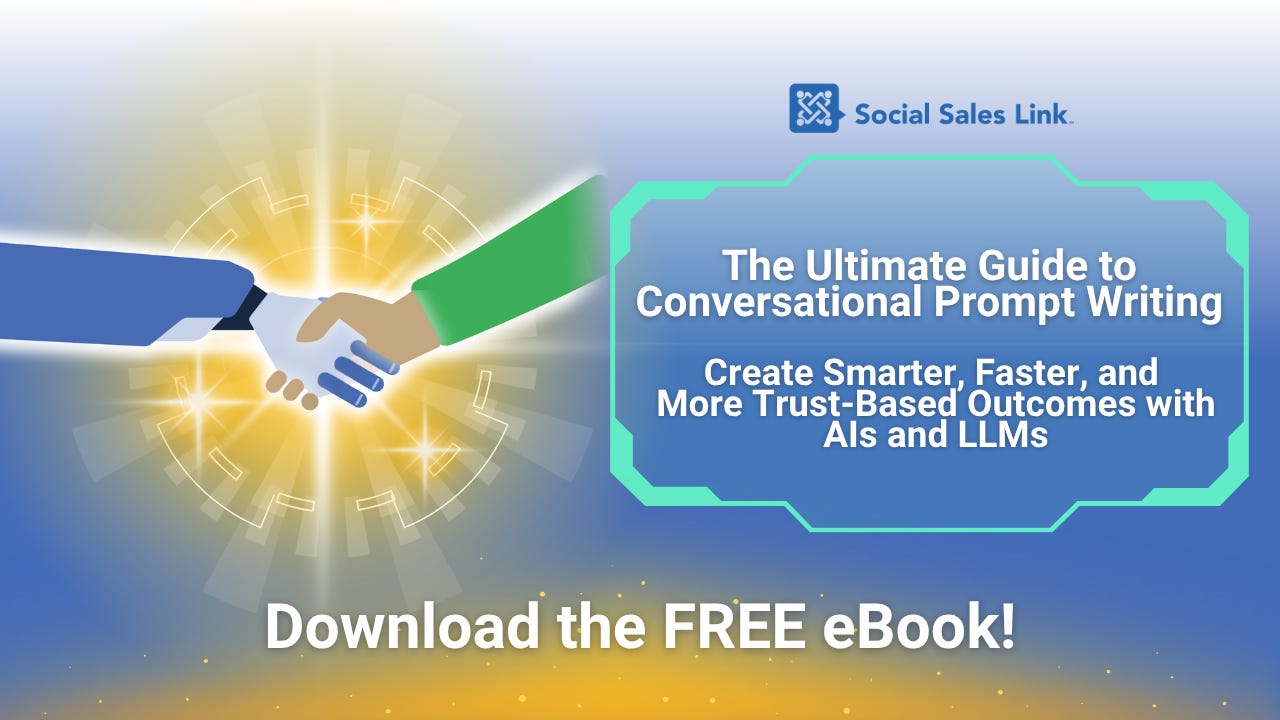Fix Your AI-Generated Content Fails With One Sentence
Meet (and beat) the challenge of authenticity in the age of automation.
The TL;DR (Executive Summary)
AI content is everywhere. Without voice, context, and perspective, though, it falls flat.
The failure isn’t the tech. It’s how we use it.
One sentence can instantly humanize AI output:
“Write this as if you’re me, speaking directly to one person who trusts my experience.”
When you feed AI your intent and your why, it turns from a robot into a reflection.
The Volume Trap
Every day, we scroll through LinkedIn posts and newsletters that sound fine but feel fake. They have structure, clarity, and keywords. What they lack is pulse.
This isn’t the AI’s/LLM’s fault. It’s what happens when speed replaces substance.
People think they’re scaling themselves when in reality they’re really just scaling sameness. They want efficiency but forget that trust isn’t built through output… it’s built through insight.
That’s why AI content often reads like it’s written for everyone, and yet connects with no one.
Real trust comes from clarity, perspective, and consistency. Those can’t be automated, but they can be amplified.
Soulless Input = Garbage Output
You create your own voice. AI doesn’t (and can’t) do that. LLMs can only echo your thinking.
Feed it a shallow prompt, and it produces a shallow post.
But if you feed it your experience, intent, and perspective? Suddenly, it becomes your creative ally.
I’ve already revealed it in the TL;DR section, but here’s the sentence that changes everything:
“Write this as if you’re me, speaking directly to one person who trusts my experience.”
That one line reframes everything about your process. It forces you to define who that “one person” actually is, and what you genuinely want them to understand.
Suddenly, AI is no longer filling space. It’s extending your space. It starts sounding less like a robot and more like you on your best day: clear, confident, and conversational.
Why It Works
Authenticity doesn’t come from tone. It comes from intent. When you use AI to sound “human,” it tries to mimic emotion. When you use AI to extend your human thinking, it reflects your emotion.
That’s the difference between imitation and amplification.
When your prompts center around a real audience, specific insights, and your personal rhythm, the output resonates. It reads like a trusted peer, not a pitch.
And that’s the shift happening right now… from AI for content to AI for connection. If we’re honest, AI should have never been used for just “content.” I’m glad we’re all discerning enough to demand this kind of change.
The New Baseline
We’ve all heard the old line, “AI is coming for our jobs!” More accurately, though, I think that AI is coming for your process. You can either let it flatten your voice (or even change it entirely)… or train it to express it better than ever.
The truth is, AI will never replace you. It can expose you, though. It reveals how clear (or unclear) your message really is. And the results usually veer sharply towards that “unclear” direction.
Use LLMs for creativity. Use them to overcome the “blank screen” syndrome that many of us experience to come up with ideas for our content. Use it to sharpen our thinking… to accelerate your creativity.
Use AI to organize, outline, and optimize… but never to replace the human in the loop. (That’s you.)
When you combine your lived experience with AI’s capacity to structure and scale, you get something that moves people, that starts conversations, that connects with your readers. After all, you’re not looking to connect with an algorithm (hello, LinkedIn)… you want to connect with other humans.
One Simple Sentence Leads To…
Before you hit the “Return” key on your next content-related LLM prompt, take five to 10 extra seconds and type this:
“Write this as if you’re me, speaking directly to one person who trusts my experience.”
Then ask yourself:
Who is that person?
What problem are they trying to solve?
And what truth do you want to share that will make them stop, think, and trust you?
Between The Sentence™ and this additional information, you’ll start to transition from generating “AI content” to creating authentic impact. After all, that’s what you want to have with other people… right?
If you want to go deeper into the kinds of AI prompts that drive honest, trust-based conversations, not robotic noise, grab a free copy of our new eBook:
The Ultimate Guide to LinkedIn & AI Prompts for Trust-Based Conversations (click for details)
It’s packed with practical strategies and real-world examples to help you turn AI and LLMs into your most authentic business ally.
NOTE: The hero image of this article was generated with AI.



